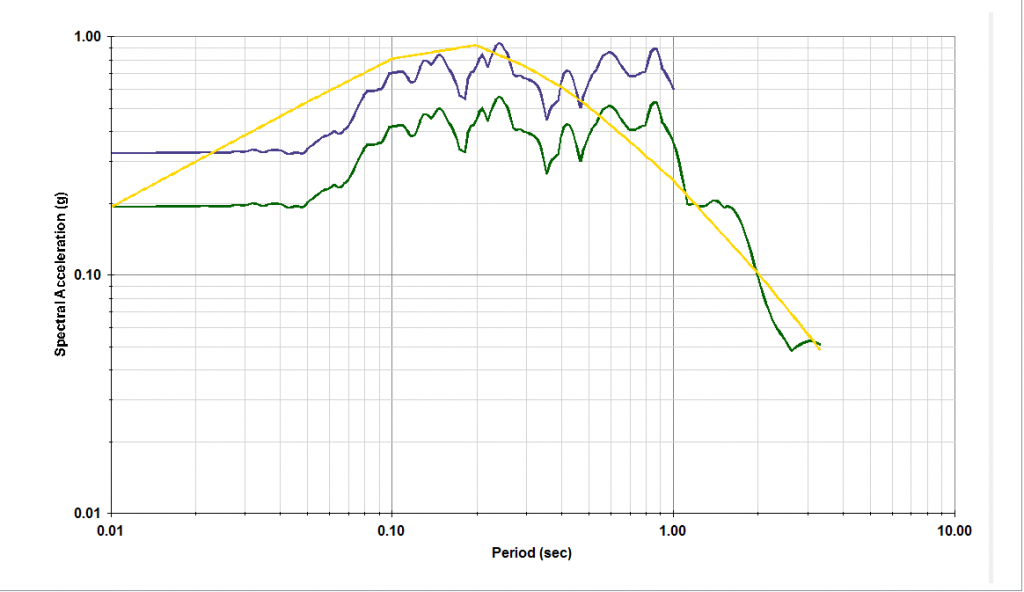Spectral Matching Algorithm
Spectral Matching Algorithm
EZ-FRISK™ now features the 2009 version of RSPMATCH as documented in:
“An Improved Method for Nonstationary Spectral Matching“, Linda Al Atik and NormanAbrahamson, Earthquake Spectra, Volume 26, No. 3, pages 601-617, August 2010
RSPMATCH is widely considered to be the best method to create realistic ground motions, far better than methods that operate in the frequency domain. The core code has been enhanced with additional capabilities and improved flexibility.
Spectrally matched ground motion time histories for bedrock should be further processed to incorporate the site response, which is the modification of the time history caused by the unique layering of rock and soil at the site. EZ-FRISK™ now includes Site Response Analysis using SHAKE91. SHAKE91 propagates the bedrock time history through soil and rock layering to produce a site-specific outcropping ground motion. With EZ-FRISK™, you can quickly process a suite of matched accelerograms.
Overview of Capabilities
Spectral matching makes adjustments to an input accelerogram so that its response spectrum matches a target response spectrum. You can perform spectral matching as a stand-alone task by directly providing the target spectrum, or in conjunction with a PSHA. When using spectral matching with PSHA, the target response spectrum is the uniform hazard spectrum for a specified return period. EZ-FRISK™ uses the well know RspMatch2009 spectral matching algorithm under license from Norm Abrahamson This code is based on the time domain method of Tseng and Lilanand (1988), with modifications to preserve non-stationarity at long periods by using different functional forms for the adjustment time history. The matched accelerogram can then be used as input into a site response program such as Shake91 to obtain an accelerogram that is suitable for structural analysis and design.
A key benefit of using EZ-FRISK™ for spectral matching is that it has a powerful search feature which quickly provides key information in choosing an appropriate initial accelerogram. It contains a scoring feature to select the best accelerograms based on the initial response spectrum’s match to the target spectrum, the degree of scaling required for the accelerogram, and the duration of the event. The search gives immediate feedback in the form of thumbnails of the unscaled and scaled accelerograms, as well as the response spectrum.







Comments are closed.